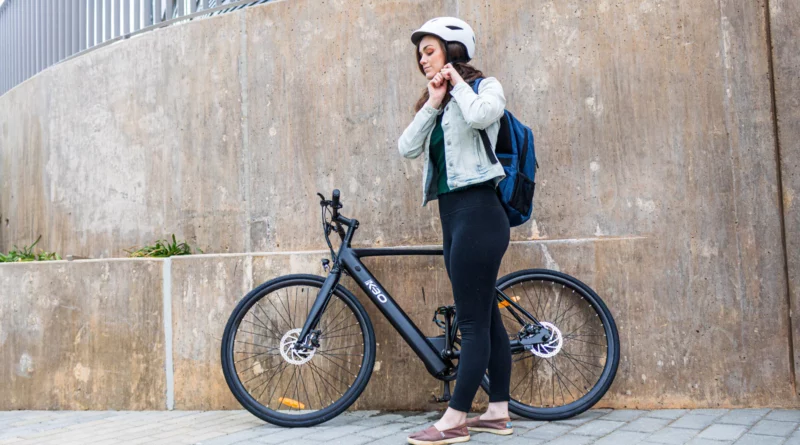E-Bike Classifications: What are They and How to Choose?
Picture this: you’re riding a bike, the wind in your hair and the sun on your face, but instead of struggling up a hill, you effortlessly glide to the top with the help of a motor. Welcome to the world of e-bikes, where the traditional bike meets modern technology. E-bikes are becoming more and more popular, and for good reason – they offer a new level of freedom and accessibility to riders of all levels. But with different types of e-bikes available, it can be overwhelming to figure out which one is right for you. That’s where e-bike classifications come in. In this post, we’ll take a closer look at the different e-bike classifications, what they mean, and how to choose the right one for your needs. Let’s get started!
Class 1 e-bikes:
Class 1 e-bikes are electric bicycles that provide pedal assistance only, meaning the motor only activates when the rider pedals. They are also known as pedelecs. Class 1 e-bikes have a maximum assisted speed of 20 miles per hour.
How they work
Class 1 e-bikes use a sensor system to detect the rider’s pedaling and provide a boost of power to the motor accordingly. The rider can adjust the level of assistance through a control panel, but the motor will only provide assistance up to 20 mph.
Class 2 ebikes
Class 2 ebikes come with the same speed restrictions as Class 1 ebikes, but the difference is that they have throttles that work even when you’re not pedaling. So, you have the option of using the electric motor to power your ride entirely or to use a combination of the motor and pedaling to get to your destination.
However, like Class 1 ebikes, you can also ride Class 2 ebikes on bike paths and bike lanes shared with traditional bikes. This makes them a convenient and versatile option for those who want an electric boost during their ride.
Class 3 ebikes
Class 3 ebikes can go faster, up to 28 miles per hour, but they come with a few more regulations. While they must have a speedometer, they may or may not have a throttle, depending on the state’s laws. In California, for example, Class 3 ebikes are not allowed to have throttles at all. However, in some other states, throttles are allowed, but only up to a speed of 20 miles per hour. After that, the motor will only provide assistance while pedaling up to the maximum speed of 28 miles per hour.
Most states allow Class 3 ebikes on road lanes or bike-only lanes, but they are not permitted on bike paths or multiuse trails shared with pedestrians, such as those in parks. However, some ebikes have a special mode that limits the speed to 20 miles per hour, making them suitable for multiuse trails and paths. By toggling a setting or removing a special physical key, the bike’s full potential can be unlocked for use on roads or faster bike paths.
How about Unlocking the speed of Ebikes?
There is also a wild, unchecked trend of e-bike producers doing whatever they like. How about 60 miles per hour on an ebike? They’d essentially be electric bikes at that point, with pedals that aren’t necessary. Some extremely fast ebikes may reach speeds of over 28 miles per hour, yet they are nonetheless theoretically and legally inside the classification system thanks to a switchable setting and the participation of the rider.
The system relies on honesty. In order to unlock the maximum speed on many e-bikes, such as the Wing Freedom 2 and X, you must either agree not to ride the bike in a designated bike lane or be on private land. The bike’s display screen or a companion app, if available, make it simple. Although the majority of these vehicles are only capable of slightly exceeding the class restriction of 28 mph, the Vintage Electric Roadster and the HPC Black Lightning are capable of speeds much in excess of that. This is how some companies can market electric bikes with motors 40 times more powerful than standard while yet being in compliance. At the flip of a switch, it becomes a Class 2 or 3 ebike, meeting all legal requirements.
Do not leave unlocked e-bikes in areas frequented by people, such as bike paths or parks. You shouldn’t be driving so quickly that you can’t stop in time to avoid hitting a pedestrian, a bird, or a Porsche that happens to meander into your path.
Electric bicycle or motorbike? To Scoot or to E-Scoot?
Because of the proliferation of anything that can move on wheels, the language around electric cars has become confusing. While the legal status of e-bikes is less clear than that of other types of motor vehicles, it varies from jurisdiction to jurisdiction. To begin, electric bikes are not a subset of scooters.
Scooters should be used to describe kick scooters like the Ninebot ES2, whereas “mopeds” should be used to describe vehicles like Vespas. The name “moped” is often used to describe these vehicles. An electric kick scooter is significantly more difficult to confuse with a traditional bicycle due to its smaller wheels and standing position rather than sitting.
